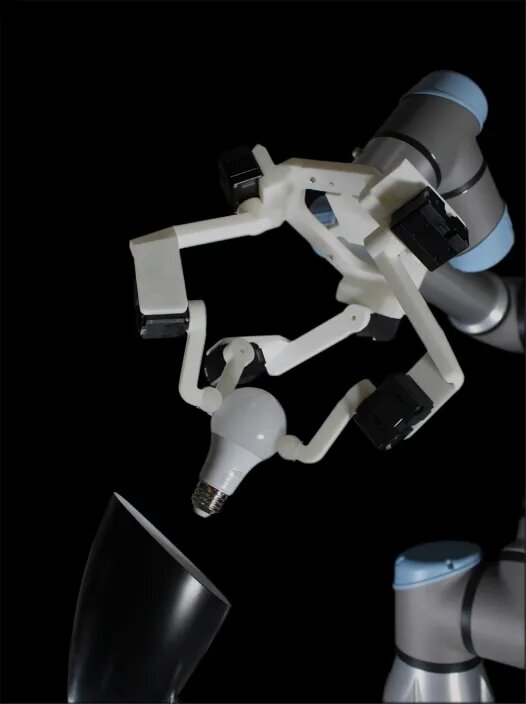
Robots are masters of efficiency when they’re programmed for a very specific task—like moving cans along a conveyor belt in a factory.
But ask them to perform everyday actions that humans find simple, such as twisting a light bulb into place or turning a doorknob, and they quickly run into trouble.
The challenge often lies in the design of their “wrists,” which tend to be bulky, complex, and awkward to use.
Now, researchers at Yale University have developed a simpler, smarter alternative that could make robots much better at handling real-world tasks.
Their new design, called the Sphinx, combines the functions of a robotic wrist and gripper into one streamlined mechanism.
The results, published in Nature Machine Intelligence, suggest this approach could open up new possibilities for robots in homes, disaster zones, and other unpredictable environments.
Traditional robot wrists typically allow three types of movement: roll, pitch, and yaw—essentially rotating front-to-back, side-to-side, and up-and-down.
While these degrees of freedom are necessary for manipulating objects, the mechanisms that provide them are complex and often placed some distance from the object being held.
This means the robot has to move its entire arm to perform simple rotations, resulting in clumsy, inefficient motions that also require lots of space.
The Sphinx design takes a different path. Developed in the lab of Professor Aaron Dollar, it uses a spherical mechanism that allows objects to be grasped and rotated in all three axes directly at the point of contact.
In other words, it can roll, pitch, and yaw an object without relying on the entire arm to provide those movements.
“It’s not very complex,” explained Vatsal Patel, lead author of the study and a Ph.D. candidate in Dollar’s lab. “It doesn’t have sensors or cameras. Because of the spherical mechanism, it naturally handles rotations in all directions.”
This simplicity makes the wrist more compact, faster, and less resource-hungry than traditional designs. It also makes the robot more capable in tight or cluttered spaces, such as screwing in a light bulb inside a closet.
By reducing the need for sweeping arm movements, the design allows robots to work more efficiently and with greater precision.
The broader goal is to create robots that can adapt to unstructured environments—places where objects are not neatly arranged or predictable, like homes, warehouses, or disaster sites.
“In these environments, robots don’t know exactly where objects are,” said Patel. “They have to adapt to the environment and to the objects themselves. That’s where robotics is heading, and this design helps solve some of those problems.”
The Sphinx is still in the research phase, but its elegant simplicity points toward a future where robots are not just industrial machines, but practical helpers able to perform everyday human tasks with ease.



